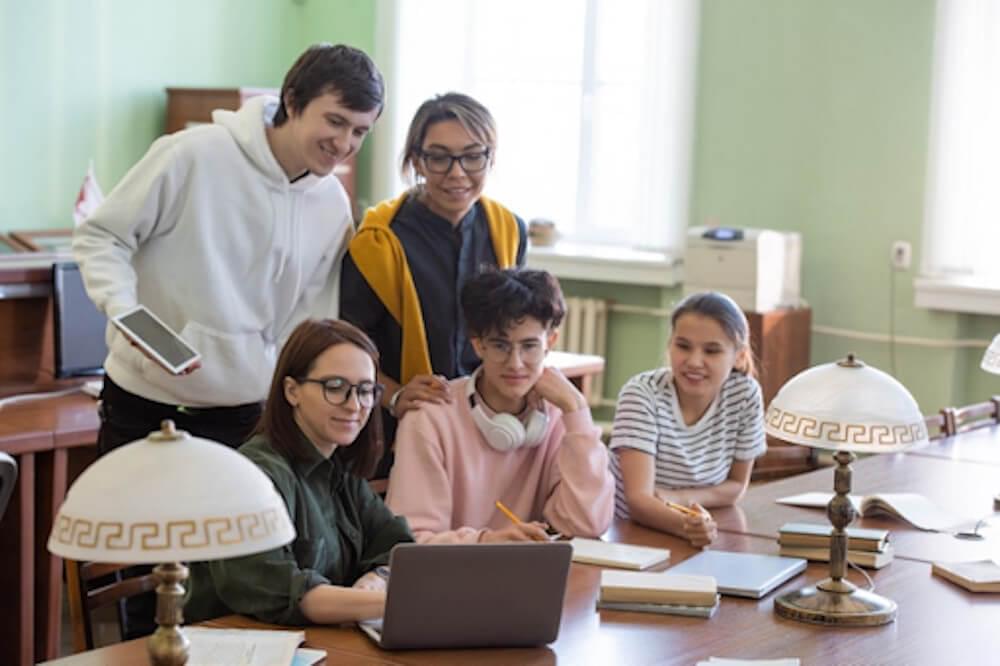
video tutorials for social
5 Ways To Create Educational Content Using Captions
With the present advancement of technology, our lives’ basic requirements, particularly our learning process, have become more accessible and manageable. We tend to struggle before with materials and arduously research on arrays of books and magazines to catch what was needed. Today, the innovation that has eliminated hard labor in gathering data has been answered through the Internet Of Things (IoT). We no longer scan ideas and data manually, but by tapping keywords in Google and other search engines, we can acquire a complete result that our eyes can feast with precision and citation. We learn many things by reading articles and watching relevant videos that have become an everyday necessity imposed with the new learning system adapted globally.
Nowadays, video content has become a powerful tool in education. The advantage it supplements to the learning activity, from the classroom to distance and remote learning, is greatly extended. Educators encompass new technology and the application of video. By law, video content requires to be available to those with disabilities, like the deaf and hard of hearing. This specification puts a hardship on educators’ expense and time, but it does not have to be as intimidating as it sounds. But one significant element in your educational videos that you should never neglect is the caption. But why?
What is a video caption?
Captions are the on-screen text from the spoken language of a television, movie, or computer display. They are in the language of the communication rather than a translation to a different language. It can either be open or closed. Closed captions provide an option to the user whether to turn it on or off. In contrast, open captions are part of the video itself and cannot be excluded.
Closed captioning was originally developed to help people with hearing impairments. Sectors and laws implemented firmly requiring the utility of captioning visual materials are Section 504 and 508 of the Rehabilitation Act, the International Web Content Accessibility Guidelines (WCAG 2.0), the FCC’s CVAA, and The Americans with Disabilities Act. These laws and preferences implement across administration, learning, production, and business to stop prejudice against people with disabilities.
While captions guarantee accessibility, they are helpful for a mixture of other ideas. For example, captions enable viewers to catch the story when sound is not audible, either because of a loud background or because of a sound-sensitive environment, like public areas. Even more widespread these days, captions permit viewers to get videos streamed on social media news feeds, playing the video on silent by default.
Here are five ideas about why captions can make educational content in the most effective ways:
1. To Learn A New Language
Learning a different language can be an overwhelming activity that uses the brain in all the right directions and stimulates you to become more informed. Maybe you’re attending a class or two in college or utilizing language learning apps to practice your skills like Duolingo. A recommended approach to test yourself is to view media in the foreign language you’re learning, such as movies and television shows. It can be a challenging responsibility as you’re being opened to the language spoken by natives, who may be employing slang or babbling, which is undoubtedly difficult to understand. The extensive primary advantage of using captions is that they offer genuine resources available in your target language, despite your proficiency level.
Considering the ultimate purpose of language learning is to understand native speakers, it’s essential to listen to real media and conversations by natives. But, for beginning students, this is frequently too challenging. Captioning, fortunately, executes that type of content understandable even for beginners. Additionally, watching subtitled content is an uncomplicated approach to transformation to watching only in your target language. If you haven’t seen much genuine content before, it can be formidable, even if you’ve learned the language for ages. However, if you commence by watching captioned content, you can acquire the skills you require to understand authentic language in a more supportive, less discouraging, and entertaining setting.

2. For Those With Hearing Concerns
Closed-captioned videos benefit the deaf and hard of hearing. Those are amazingly critical in producing video content available not only to the deaf but, admittedly, anyone placed in a position where hearing capability or audio property is compromised. Closed captioning is known as an assistive technology created to accommodate access to television for persons with hearing impairments by presenting text on the television screen that illustrates the audio or sound part of a program. Captions enable viewers to catch the conversation and the development of a program simultaneously.
These captions give information about who is talking or about sound impacts that may be essential to following a news story, a political situation, or a program’s development. It is also produced from the transcript of a program. A Captioner divides the conversation into captions and ensures the words appear in sync with the audio they describe. A uniquely created computer software program encodes the captioning data and merges it with the audio and video to produce a different master tape or digital file of the program. But video captions today are no longer a difficult task to fulfill. Auto video subtitling tools are now available in the digital market that can be either downloaded or simply use a browser to access like what SubtitleBee is offering.
3. To Boost Literacy Skills
Researchers have made notable strides in learning the connection between closed captions and literacy among students worldwide. A teacher may notice several students who are struggling readers in a regular classroom, whether they are reading beginners, students with language-based learning incapacities, or English Language Learners (ELLs). One motivating, appealing, and modest system to assist developing students’ foundational reading skills is by closed-captioned and subtitled television shows and movies.
This help can heighten foundational reading skills, such as phonics, word comprehension, and fluency, for many students. Given the broad and inexpensive availability of captioned media on broadcast television, DVDs, and online, it can be an attractive addition to your teaching of different learners.
4. To Motivate Reading Activity
Several struggling readers avoid text and so have lesser exposure to print. Think about the additional hours of print exposure your students would perceive when you add captions to videos watched at home or school. Research investigating captions’ influence on literacy has consistently stated that students favor closed captions to learn how to read. Teachers who include videos with captions into their teachings will discover that students are more focused and display more proper understanding. As several non-readers or pre-readers shy away from text-full media like books or newspapers, captioned videos are an excellent method to facilitate students into a reading exercise that is familiar and convenient. It is particularly valid for students with language-based learning limitations or who speak English as a second language.

5. Accessible And Manageable Means Of Learning
There’s an apparently unending share of free programming featuring closed captions open on broadcast television and online to utilize teaching guidance. The FCC requires that all television in the United States should have closed captioning correct, synchronous with the audio, comprehensive, and appropriately placed to not mislead from the visuals on screen. Besides that, the FCC also wants that all content online that was originally broadcast on television also features closed captions.
A few studies also prove that captions are natural to follow and maybe less alienating than books. Many non-readers or pre-readers neglect text-loaded media like books and magazines; captioned videos are an excellent alternative to facilitate students into a reading exercise that is familiar and achievable. Learning to read necessitates much practice and lots of motivation to put students in the mindset to retain. Captions provide a vital source of material and permit students to convert each movie, television program, and YouTube video into an opportunity to learn new words, sharpen their skills, and become more positive with reading.
Conclusion
Videos in the present generation are being used more and more to teach and inform people. Having accurate captions can produce educational videos available and improve the learning experience. Captioning your aspired content may require hours and attention, which may depend on the length and complication. You can either hire a caption service company, freelancers or utilize auto-captioning tools. For now, automatic captions are gradually transforming into a dependable tool to help lessen work manually. You do not have to put too much pressure, effort, and costs, to add the on-screen text to your content.
Captions can be a remarkable component in the teaching department. As mentioned above, its uses and ways to create compelling learning materials are of great value to students who have hearing issues and get bored of the monotonous cycle of lectures. But with entries to educate utilizing captioned movies, exciting videos, the learning experience has become fun and engaging. Students can relate, especially when you require them to view content that interests them the most and entice them to interact to make their studying more accessible and convenient.
Add and translate your subtitles to more than 100 languages with high accuracy












